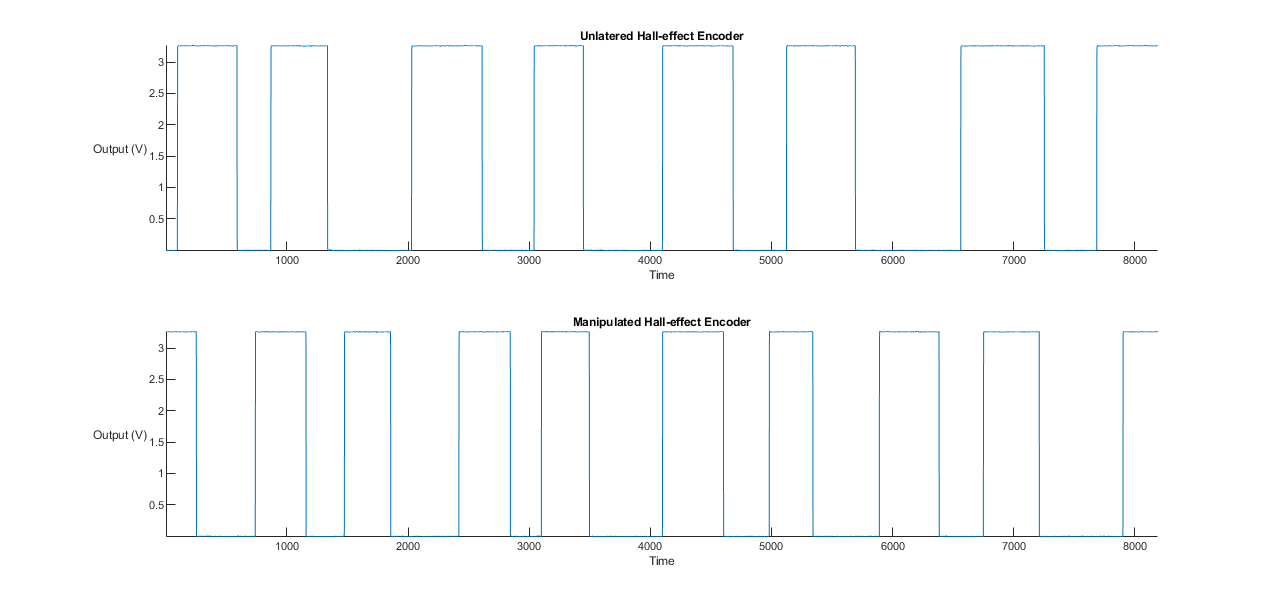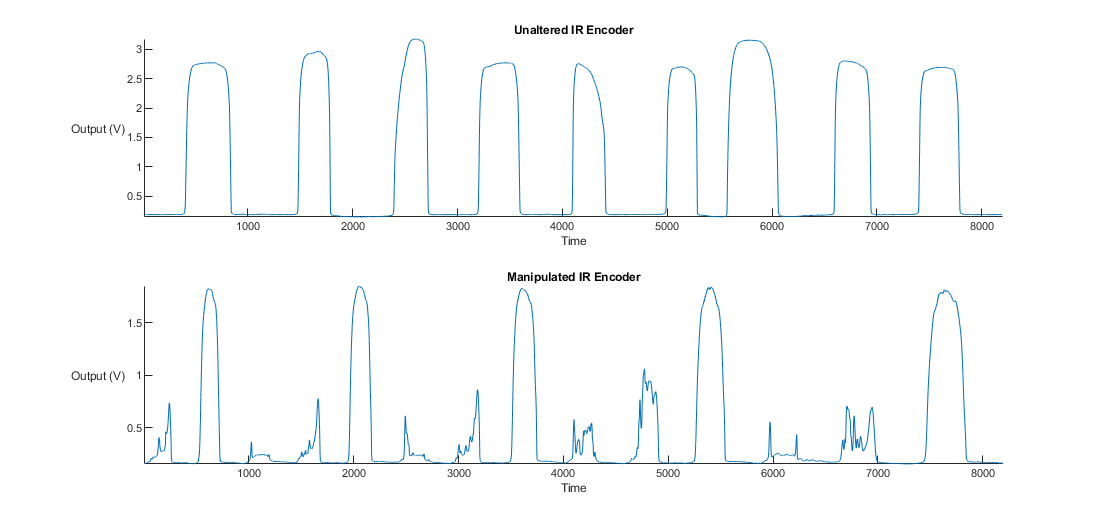SLYA060 August 2022 TMAG5110 , TMAG5110-Q1 , TMAG5111 , TMAG5111-Q1
8.3 Susceptibility to External Particles
The external particles susceptibility test was conducted by covering the top portion of the incremental rotary encoder with pet hair. These systems are oftentimes expected to perform in dirty environments, such as robot vacuum cleaners or robotic equipment in warehouses, therefore it is of paramount importance that these systems be immune to fragments that could be present in these harsh environments. The output was observed for missed outputs or changes in behavior.
Figure 8-6 shows the susceptibility of the Hall-effect based encoder, where the results demonstrate the behavior of both the encoder manipulated with the pet hair and the unaltered encoder. As seen in Figure 8-6, the magnetic encoder is not showing much of a difference in system behavior. This is due to the immunity of the magnetic field to external particles such as hair and dirt. The B field cannot be blocked, therefore the sensor still receives the same amount of magnetic flux to change the output accordingly.
 Figure 8-6 TMAG5111 Encoder Susceptibility Tests.
Figure 8-6 TMAG5111 Encoder Susceptibility Tests. Figure 8-7 shows the susceptibility of the optical-based encoder, where the results indicate the behavior of both the encoder manipulated with the pet hair and the unaltered encoder. Here there are a few discernible differences, the first one being that the encoder is missing some the pulses. It is noticeable that the signal may be slightly picked up by the receiver, but the hair is enough to prevent the light to completely come through. The next item to note is the amplitude of the signal. In the unaltered system, we can the signal goes beyond 2 V and reaches approximately a maximum of 3 V. In the manipulated system, however, the peak signal does not exceed 2 V. It seems like the more dirt and grime that build up inside the optical system would yield a reduction in signal amplitude, at some point perhaps never reaching the threshold to notify the system that it is moving.
 Figure 8-7 IR Encoder Susceptibility Tests.
Figure 8-7 IR Encoder Susceptibility Tests.